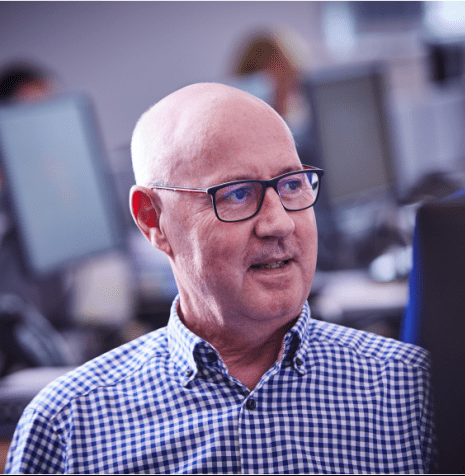The Changing Face of Contact Lens Fitting

By Martin Conway
In the October 2022 edition of Contact Lens Spectrum, Ed Bennett’s report on the GP and Custom Soft Annual Report 2022 provided a comprehensive insight into the prescribing habits of top US practitioners. Scanning the list of subscribers, they are mainly Key Opinion Leaders and researchers, so this may not necessarily be indicative of what is going on in the rest of the US market, much less in diverse markets around the world. It does, however, give a good indication of the direction the contact lens industry will take over the next ten years or so.
We also see the growth of interest in the control of myopia with both soft and GP ortho-k, as well as the continued use of scleral lenses – none of which should surprise us.
Another prominent trend is the increased use of complex optics such as wavefront-guided lens designs and the correction of Higher Order Aberrations, requiring complex calculations to achieve success. All of which need accurate digital data in order to be effective.
Practitioners fitting ortho-k lenses typically do so with the aid of a topographer and not a fitting set. The recent increased use of scleral lenses has been facilitated, in great part, by the routine use of OCT during normal optometric practice. So we see that increased technology use has already occurred over the past decade or two.
Specialist lens practitioners have long since exchanged their keratometers for topographers; the data produced is then converted by laboratories’ algorithms to provide a points file which is fed directly into a lathe. This delivers an almost guaranteed first-time fit and has replaced the need for fitting sets for ortho-k and regular corneal lenses. Laboratories also benefit by not having to provide dozens of fitting sets, many of which are seldom used, and the practitioner benefits from fewer refits and reduced chair time.
The information provided by a Placido Ring-based instrument does not cover the entire cornea, and although a vast improvement on the keratometer, a certain amount of extrapolation is required in order to give information up to and beyond the limbus.
Enter the Corneal Profilometer. For some years, the suppliers of these instruments have been extolling the virtue of their advantages over conventional topography. These have had limited success in Europe, but the US market appears to have accepted the concept more readily than elsewhere. This is perhaps because of the more rapid uptake of scleral lenses in that market, and it would appear from the report that their use is now becoming more mainstream.
The information produced by these new instruments allows for more personalised designs to be created, incorporating edge profiles that exactly match the patient. Again, the information collected by the instrument provides the raw data for an algorithm that ultimately feeds the lathe with data in order to produce the finished lens.
Scheimpflug-based instruments are also available on the market, which will, not only collect data over the entire cornea and provide 360-degree imagery but also download that data to an online lens design module that, in turn, instructs the lathe directly.
There is now a small but growing interest in fitting intra-limbal designs for regular corneae because of the additional comfort they provide for the new wearer. Experience with ortho-k designs, which tend to be slightly larger and more comfortable than normal GP designs, has persuaded practitioners that larger diameter lenses might offer greater comfort than conventional designs for their regular patients.
Although these designs have been suggested for some time, practitioners found the unfamiliar fluorescein pattern produced by these larger lenses confusing, and apart from a few dedicated followers, their use has been limited.
With accurate data from the limbal area and beyond, this modality should develop further as algorithms take over the need to learn new skills. Those practitioners already using this type of lens describe the comfort as similar to soft lenses within two hours of wear, yet with the visual acuity typically associated with GP lenses.
Looking forward, I can see that practices wishing to develop their speciality contact lens business will need to commit to investing in instrumentation within their practice. Either in the new generation of topographers, which can provide a composite picture of the complete cornea and beyond, one of the Corneal Profilers, or Scheimpflug anterior chamber imaging systems.
As lens designs develop and provide increased comfort and vision for myopia management, ectasia, and other ametropias, more opportunities will open up for the profession. These opportunities will require accurate data to be provided to the laboratory, and consequently, laboratories will need to be set up to receive this digital data and apply it to their new and existing designs.
Practices that do decide to invest in their speciality lens business can look forward to reaping the benefits that these instruments permit. They will differentiate themselves as patients appreciate the level of investment and enjoy the increased comfort and visual benefits they provide.
These developments will not come about overnight. Ed Bennett’s report gives a snapshot of what is happening within some very sophisticated and specialised practices, and the US market has a significant influence on how the worldwide market will develop.
We can look forward to exciting developments over the next few years, led by diagnostic technologies that will change the way bespoke contact lenses of all types are supplied.

Martin Conway has over 40 years’ experience in the contact lens field as a qualified Contact Lens Optician. He is registered with the UK General Optical Council on the Speciality Contact Lens Register. Martin is a fellow of the British Contact Lens Association (FBCLA), and The International Association of Contact Lens Educators (FIACLE). He has served in the Professional Services role as an educator and clinical adviser on behalf of both Sauflon and CIBA, and now acts as Professional Services Consultant for Contamac. Martin has lectured extensively in Europe, Asia, Russia, North and South America and the Middle East.
More articles by Martin Conway:
The Soft Lens Dropout Patient – Part 2
Class 2022 – See you in Cartagena
The Soft Lens Dropout Patient – Part 1
